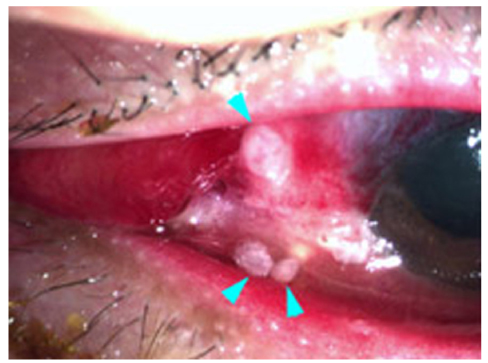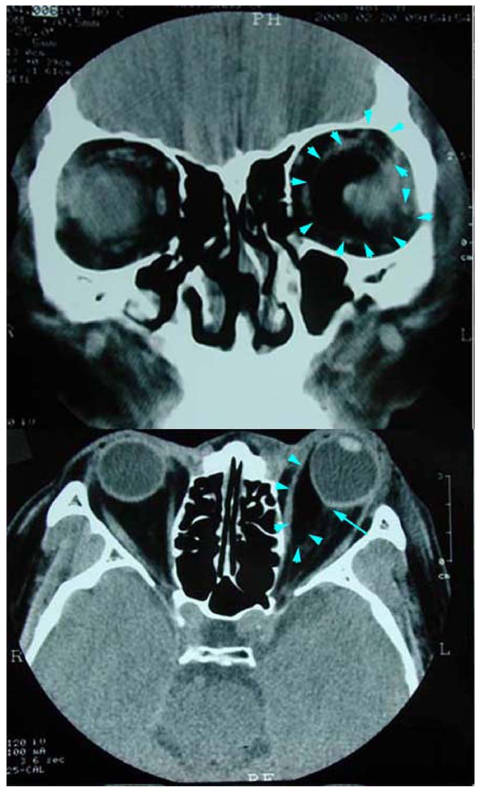Korean J Ophthalmol.
2010 Apr;24(2):134-138. 10.3341/kjo.2010.24.2.134.
Traumatic Optic Neuropathy Accompanying Orbital Grease Gun Injury
- Affiliations
-
- 1Department of Ophthalmology, Kim's Eye Hospital, Konyang University College of Medicine, Seoul, Korea/. yjlee@kimeye.com
- KMID: 946008
- DOI: http://doi.org/10.3341/kjo.2010.24.2.134
Abstract
- We report a case of traumatic optic neuropathy accompanying a grease gun injury to the orbit. A 48-year-old man with a grease gun injury visited our clinic with decreased visual acuity, proptosis and limited extraocular movement (EOM). Orbital CT revealed a crescent mass of fat in the medial intraconal space. The grease was exuded from a lacerated conjunctival wound. The visual evoked potential (VEP) test demonstrated a decreased response in the left eye. Proptosis and EOM were improved after surgical removal of the grease. Systemic high-dose corticosteroid therapy was administered for suspected traumatic optic neuropathy, after which VEP nearly recovered, while visual acuity was slightly improved. A second surgery for traumatic cataract did not further improve visual acuity.
MeSH Terms
Figure
Cited by 1 articles
-
Orbital Cellulitis from an Orbital Compressed Air and Diesel Explosion Injury
Kyoung Hwa Bae, Nam Chun Cho, In Cheon You, Min Ahn
Korean J Ophthalmol. 2018;32(2):158-159. doi: 10.3341/kjo.2017.0135.
Reference
-
1. Dallas NL. Chronic granuloma of the orbit caused by grease-gun injury. Br J Ophthalmol. 1964. 48:158–159.2. Boukes RJ, Stilma JS, de Slegte RG, Zonneveld FW. Grease-gun injury of the orbit: computed tomography and magnetic resonance imaging in diagnosis and treatment. Doc Ophthalmol. 1987. 67:273–280.3. Goel N, Johnson R, Phillips M, Westra I. Grease gun injuries to the orbit and adnexa. Ophthal Plast Reconstr Surg. 1994. 10:211–215.4. Gekeler F, Cruz AA, de Paula SA, et al. Intraconal grease-gun injury: a therapeutic dilemma. Ophthal Plast Reconstr Surg. 2005. 21:393–395.5. Wang Y, Lu X, Xiao L. Delayed presentation of grease-gun injury to the orbit. Ophthal Plast Reconstr Surg. 2008. 24:154–156.6. Levin LA, Beck RW, Joseph MP, et al. The treatment of traumatic optic neuropathy: the International Optic Nerve Trauma Study. Ophthalmology. 1999. 106:1268–1277.7. Steinsapir KD. Treatment of traumatic optic neuropathy with high-dose corticosteroid. J Neuroophthalmol. 2006. 26:65–67.







